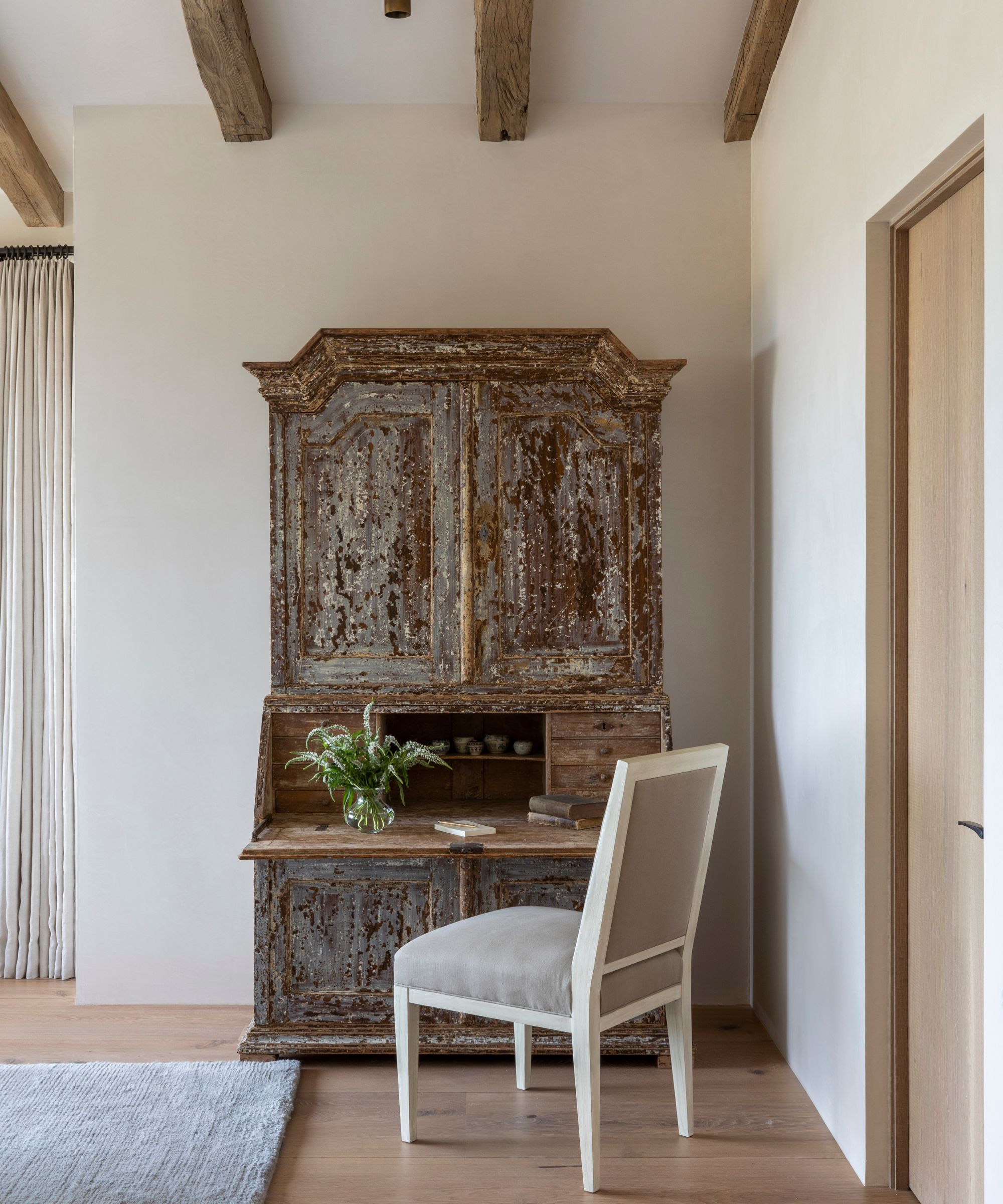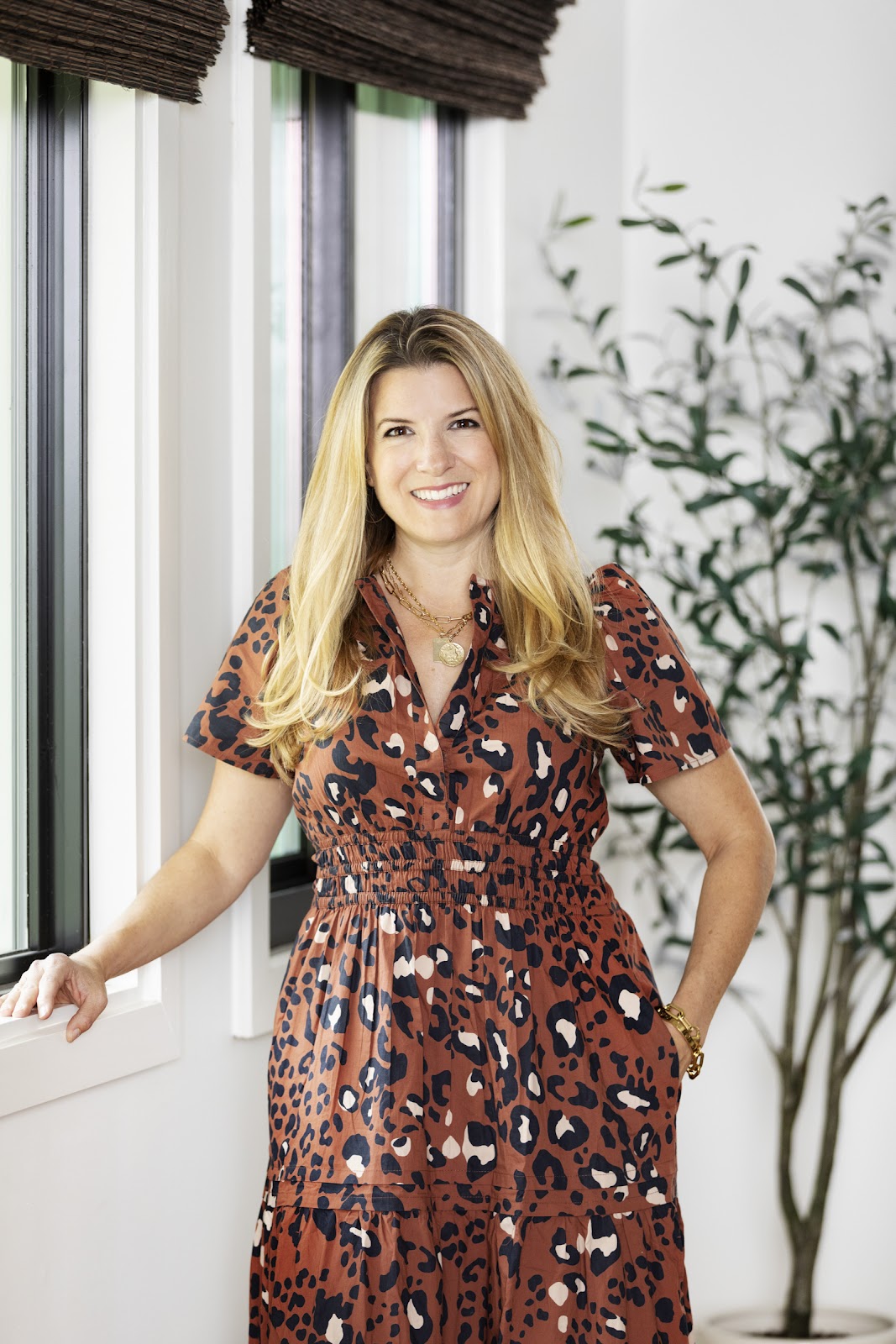8 questions to ask yourself before buying vintage furniture
Buying secondhand has never been more accessible (or popular), here designers let us know their tips for ensuring you always get the perfect buys for your space


Buying vintage, antique and second-hand furniture has never been so easy. It's never been so popular either. With the rise in online marketplaces, you no longer need to trek out to a store and scour warehouses for the perfect piece, you can do it from your own sofa.
Shopping secondhand has so many pros – decorating with vintage is better for the planet, it can make quality pieces more affordable and these pieces help create timeless spaces that aren't trend-led, something we always want to achieve.
However, there are downfalls of buying vintage furniture, and there are questions to ask yourself before you make the purchase to ensure it's the right piece and the right price. So we asked interior designers who love to source vintage and antique pieces, what those questions should be.
What should you ask yourself before buying vintage pieces?
'When designing interiors, I am always looking for ways to incorporate antiques. Antique and vintage pieces can be the workhorse of a space, creating layers of history, charm, and fascination to every room. When shopping for antiques, there are lots of questions and considerations to make,' says designer Marie Flanigan.
It's easy to get carried away when shopping for vintage furniture and decor, you fall for pieces and are so keen to make them work in your space, practicality is often an afterthought. And while these heart-led purchases can be the best, not every piece can be bought purely because you love it. It is also important to ask yourself some practical questions before you invest.
1. Is it in good condition?

This is the first question you should be asking yourself when buying vintage furniture, 'Is it in good condition? Vintage and antique furniture inevitably comes with some wear. It’s all part of the character and is actually really quite nice. I like being able to see where a wooden drawer has been worn over the years. However, if a piece of wooden furniture has woodworm or the legs are uneven, these will affect how long you can use your piece for,' explains Sally Mortimer, antique dealer and owner of Opus Antiques.
'How is the coloring too? Over the years furniture builds up surface color and shine, known as patina. This comes from waxing and polishing. It’s not something that you can fake. It takes hundreds of years of handling and that’s pretty priceless to me. It’s a reminder that these pieces have been well-loved and admired. If the furniture is painted, ask the seller what it’s like underneath. If the paint isn’t original (a little flaky and imperfect) it could be more modern than it claims to be, so shouldn’t be expensive.'
Design expertise in your inbox – from inspiring decorating ideas and beautiful celebrity homes to practical gardening advice and shopping round-ups.
Jennifer Walters, founder of Folding Chair Design agrees, 'Always inspect the item closely. Some items look great at first glance but working parts might be damaged and beyond repair. Depending on the level of quality you are after, this might be an issue. Look over every inch of the pieces you are looking at, and actually try to use and handle the item.'
'If you’re looking to start collecting or keep the pieces for years, or possibly hand them down, look at craftsmanship first. Items that are well-made, from reputable manufacturers keep their value over time. They can even increase in value,' she adds.

Sally is the founder of Opus Antiques and has been working in antiques for over 30 years. She's an expert in wooden items, having dealt in both furniture and smaller home accessories. Her antique collections have been featured in Homes & Antiques and the Antique Trade Gazette where she also offers professional advice to aspiring antique dealers.
2. How heavy is it?
This is often a tell-tale sign of the quality of the piece. If you are unsure, you can usually go by the weight.
'There are three main things I like to keep in mind when I'm thrift shopping. The first is weight,' says Victoria Holly, Principal and Founder of Victoria Holly Interiors. 'The heavier the furniture or the decor item, usually the more worth it has or the higher quality level it has. This fact pretty much rings true across all eras and decades!'
'A heavier item means higher-end materials like stone, marble, denser and higher-end wood, thicker glass, or sturdier metals. This strategy can be applied to both an accent chair or a vase, or both a chest of drawers or a light fixture.'
This can of course be tricker to do online, which is why it's key to stick to the best places to shop online for vintage, go with trusted sites that have a ton of information on the pieces and the sellers. You can often speak directly with the sellers too if you need more information.

Victoria Holly Interiors is a full-service interior design firm that specializes in creating beautiful and functional spaces for both residential and commercial clients. They pride themselves on their ability to deliver high-quality projects that meet the unique needs and preferences of their clients. Victoria Holly Interiors offers a wide range of professional services, including project management, interior design, construction assistance, and renovations.
3. Do you have the space for it?

'Do I definitely have a place for this in my house? Don't let the vintage shopping adrenaline take over!' is designer Emily Henderson's advice.
This is a big one. It's very easy to buy something without really knowing where it will go and thinking you will just work that out once it's in your home. While this can work, and if you love an item often you do just make it work, you may find you are left with a bulky piece of furniture with no home for it to naturally fit. This is especially true when shopping for vintage furniture online and you can't physically be reminded of the space it will take up.
So plan where you want the piece to go first (even if you aren't sure what that piece is yet). Take measurements of these spaces, and always have them to hand (notes on your phone works well) so you can refer back to them before you buy.
And also consider how you will get the actual piece into your home (these things don't come flat packed!). As designer Jacu Strauss notes, 'Can you get it into your room/rooms? This is often overlooked, but most vintage and antique pieces are not made to come apart. Wardrobes in particular can be a challenge. Shipping is another potential hurdle, but online companies like Vinterior have made this much easier.'
4. Is it authentic (and is that important to you)?
'Is it authentic?' is a question Sally says is key to consider. 'Sometimes pieces can become a bit like Frankenstien’s monster: taking a leg from one chair, a seat from another, and a back from the other. In the antique industry, we call this a ‘marriage’. If a piece of furniture is a bit of a conglomerate, it isn’t a problem, but should be reflected in the price. They should be a lot cheaper.'
And you can ask yourself do you actually mind if it's not authentic? You can love a piece and not be original but as Sally says the price should always reflect that.
5. Is it a decorative piece or does it need to be functional?
With so much gorgeous vintage decor out there it's totally fine to buy pieces that are purely decorative, but just make sure you are aware from the start they will have no practical functions. Try where you can to look for pieces that tick both boxes, are both aesthetically beautiful but do have a practical element to them too.
'Is it decorative or functional? It’s absolutely fine to buy pieces which are purely pleasing to the eye, but there’s lots of furniture which looks good and which is really functional too,' suggests Sally.
'Say you need a table for the corner of the room, maybe look for one with a drawer underneath. Then you can store your tablemats or cutlery in there. Alternatively, a set of apothecary drawers makes the perfect place to store kitchen clutter – all those bits you don’t know what to do with: keys, string, bands, pots.'
6. Do you like the quirks?

'When sourcing vintage for clients, we always have a conversation with our clients prior to sourcing. We ask if they can embrace the quirks and imperfections?' explains designer Jennifer Davis.
'Sometimes, these unique features add character but for some people it might drive them crazy. Embracing imperfections is an integral part of appreciating decorating with antique furniture. The wear and tear tell a story and contribute to its charm. It's about seeing beauty in the unique patina, minor flaws, or signs of history that give each piece its character and individuality.'
Jacu agrees you should ask yourself, 'What degree of ageing is acceptable? I strongly believe there is perfection in imperfection. I feel some signs of wear and tear is what make vintage pieces so special and automatically add a sense of heritage and even mystery to your interior. I personally avoid pieces that were restored to the point where they have lost their charm and character.'

Jennifer fell in love with design at a young age and has been working in the industry for over 25 years. She has developed an eye for detail and a talent for creating timeless designs. Jennifer offers a balance of creativity and forward-thinking with a structured, organized, and detailed mentality. Jennifer is driven by her deep passion for design while curating an exceptional client journey, ensuring pure delight from the very beginning to the end.
7. Is it the best price?
This should be one of the first questions that you ask yourself – is it the best price? And is the right price for you?
'I would always ask both myself and the seller whether what I’m buying is at the best price it could possibly be. It’s always worth asking whether there’s any room for negotiation on the price. We expect it,' says Sally.
'And equally importantly, ask yourself is it worth it?' adds Jennifer Walters. 'If you are really investing in a piece, make sure it’s worth the price tag. Ask the vendor about it, and where it originates from. If they are charging a decent price, they usually know a bit of the history. You can also do a search of similar pieces online. Sites like Chairish and 1st Dibs also have lots of vintage/antique items to compare to in terms of quality and price.'
'Ensure you’re getting what you think you’re getting. Often, vendors make claims of what an item is, or where it came from, and it is a reproduction. If someone has 500 one-of-a-kind Moroccan vases in pristine condition, and you see them repeatedly, or at other vendors, they’re probably not as novel as you think!'
8. Do you love it?

The last thing I like to ask myself is, 'Does it surprise me? Is it exciting and beautiful?' says Victoria Holly. 'My favorite part of thrift shopping is the hunt! You never know what you'll find and there is an element of surprise and delight. And with high-quality and well-designed pieces, you also find something you maybe haven't seen before. Or that completely delights the eye. And those are the best finds for thrift shopping. And end up as the best pieces in your home.'
Jennifer Walters also agrees this should be one of the key deciding factors, 'Does the item speak to you? Many vintage items have a history and a presence. This is what makes them more unique and original in your home. If that character says something to you, it’s meant to be!'
Shopping for vintage pieces is such a joy, and understandably you can get carried away with buying beautiful furniture and decor. But keep these questions in mind when you are hunting through marketplaces and you'll be sure to come away with pieces you love that work with your home and your budget.

I am the Head of Interiors at Homes & Gardens. I started off in the world of journalism in fashion and luxury travel and then landed my first interiors role at Real Homes and have been in the world of interior design ever since. Prior to my role at H&G I was the digital editor at Livingetc, from which I took a sabbatical to travel in my self-converted van (not as glamorous as decorating a home, but very satisfying). A year later, and with lots of technical DIY lessons learned I am back to writing and editing, sometimes even from the comfort of my home on wheels.